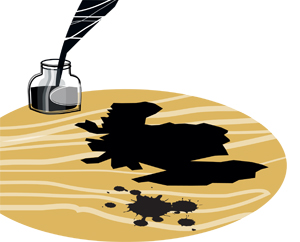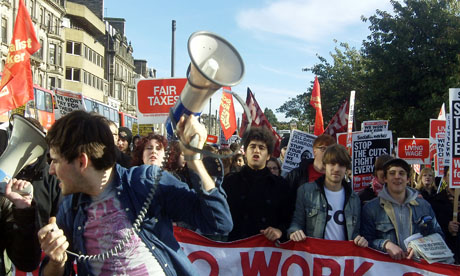Women seeking a state of independence
During the referendum campaign the number of ‘special interest’ groups declaring for ‘yes’ became a source of mockery from the ‘no’ camp (although it was actually one of the Yes campaign’s greatest strengths). But among all the farmers, lawyers, NHS, social workers and third sector for ‘yes’ groups, one group was different: Women for Independence (WfI). Firstly because we were not called ‘Women for Yes’ and were not set-up or managed by the official ‘yes’ campaign. Indeed, the launch of WfI as an independent campaigning organisation predated the launch of the Yes campaign. Secondly, of course, women are not a minority. We are not a niche or special interest group. We are the majority of the population, yet continue to be disproportionately excluded from positions of political power and influence.
However, most importantly, WfI was never just about the referendum campaign. From the start our full name was double-barrelled and reflective; Women for Independence – Independence for Women. Our common cause was not just support for independence, but also support for gender equality. While we continue to believe more powers for the Scottish Parliament will help us to achieve gender equality – this being reflected in our submission to the Smith Commission – we also recognised that it would not be automatic. Scottish independence did not guarantee gender equality – it simply offered us a better opportunity to get there.
The growth and development of WfI has been a fascinating story. Its roots are digital; women who had chatted online, particularly on Twitter, recognised a common cause and came together to form our organisation, and initially much of our presence continued to be online. Our national launch event in Stirling in September 2012 was attended by less than 100 women – to give an idea of the scale of our development the expected attendance at a forthcoming organising meeting for Glasgow South WfI is 150.
Gradually we started to set up a network of women, and we diligently collected e-mail addresses, names and locations, just so that we had a mechanism for communication. International Women’s Day on 8 March 8 2014 was a big day. For the first time, we had simultaneous action across multiple sites, with around 12 different stalls set up on high streets across Scotland. And then things got serious.
As our public profile increased, more women started to get in touch to tell us they wanted to do something locally. Some were long-standing feminists, seeking to work in the referendum campaign in a way that they were comfortable with. Others were excited by the rainbow nature of the ‘yes’ campaign and wanted to add another distinctive thread to their local campaign tartan. More unsettling were the smaller numbers of women who wanted to organise as WfI because of the official ‘yes’ campaign in their area. There was a sense from some women that, when they tried to raise their heads politically, they were pushed back down by the more dominant and experienced male voices. ‘Yes’ campaign meetings in pubs in the evening were difficult for women to get along to. So our numbers continued to grow, both in terms of women in touch with the national organisation but also the numbers organising locally.
Better Together provided a huge boost to WfI with its silly, sexist ‘eat your cereal’ advert. Without being asked to women started to send WfI their own self-filmed responses, starting with the ‘just having a cuppa …’ meme. Some of those films are hilariously funny, some poignant, some angry. Many women spoke about how they would never have dared to put a film of themselves online for the world to see if they hadn’t had the confidence that WfI had given them. All challenged the ‘Stepford wife’ depiction by showing us how they weren’t doing their housework, how they did know about politics, and preferred a glass of wine or two to the cup of tea. We trended on Twitter. During the final frenetic weeks of the campaign, the networks we built up proved invaluable. Inevitably there were last minute request for WfI to provide speakers, to come along and support photocalls and, indeed, to take part in our own activities, such as helping with the filming of the two short videos we produced and distributed during the campaign. Organically, and almost reluctantly, structures developed and we found we had an Interim Executive and local groups. We suddenly realised we had created an organisation that women wanted to be part of, not just a campaigning group.
Well before 18 September we decided we wanted to continue to exist and develop as an organisation, regardless of the referendum outcome. Independent or not, Scotland would still need a strong political, female voice pushing for power and influence. The initial irritants that had first brought women together to form WfI (such as all-male panels on TV political discussions and the low numbers of women in frontline politics) still existed. So we booked a hotel in Perth for a post-referendum ‘What Next?’ meeting, and publicised this via our networks, telling women that whatever happened, we would continue to exist so we should meet to discuss this. The Interim Executive approved two graphics to be used on the morning of 19 September, one celebrating a Yes vote and one noting a No vote. Both graphics had the same core message; our work continues.
Then, mid-afternoon on 19 September something incredible started to happen: the numbers seeking to attend the Perth event started to rocket. The numbers getting in touch to sign up for the newsletter went through the roof. (Our newsletter subscription list has tripled since 18 September.) Eventually we had to move out our planned hotel in Perth and a frantic but successful search for a larger venue saw 1,000 women coming together in St Matthews Church instead. While some women felt a little uneasy at the idea of us meeting in a working church, on the day itself the soaring ceilings and sunlit stained glass windows added an air of drama and a sense of occasion that we would not have found in a hotel conference suite.
The meeting was extraordinary. There was some mourning, some reflection, but more importantly, there was a huge strength of feeling from those who attended that our work was not over. Chaired by Kate Higgins, of Burdzeye View fame, and addressed by speakers like Carolyn Leckie, Elaine C Smith, Jeane Freeman and Natalie McGarry, we started to talk about the second part of our mission, independence for women, that is, gender equality. We started to talk about feminism, what that meant to us, and what it meant in terms of the Scottish constitutional debate.
After Perth, another extraordinary thing started to happen. Before the referendum we had ‘groups’, or at least named representatives, in most, but not all, local authority areas. The six weeks since the referendum has seen a massive mobilisation of women who want to organise their own local groups. We now have over 50 groups, including five in Fife alone. This is not a top-down organisational effort – often groups have been meeting already and making plans before they even tell the national organisation that they exist. It is glorious, organic, frantic, chaotic and very, very exciting. We are everywhere in Scotland, except Orkney.
And what are these groups doing? Not politics as usual. They are not ‘branches’, having branch meetings with minutes secretaries and reports. There are political organisations that already exist who do that very well so we don’t need to replicate them. Instead, the groups are organising training for women, who feel they lack the knowledge or personal skills to speak out about their support for independence. Some are organising book groups. There are lots of socials, parties and coffee and cake sessions. One group in Glasgow is meeting at a children’s softplay area so that mothers with caring responsibilities can get involved. In Dunfermline, WfI has organised a family ceilidh. Another group is taking part in local anti-fracking campaigns. Many groups are submitting their own responses to the Smith Commission. The groups are working with ongoing ‘yes’ groups, and working alone.
At a national level, we’re working on a proper constitution, which balances the need for a strong national campaigning voice with representation from the local groups across Scotland. We’re setting up proper membership structures, so that we can create a regular revenue stream to keep us going. True to our roots, we’re continuing with a strong digital presence and sorting out the IT glitches that we put up with during the campaign. Currently most of this work is being done by women voluntarily, often at night when they’re home from work and their children are in bed, e-mails flying from kitchen table to kitchen table. So we are becoming an organisation, but we’re not sure yet what that’s going to look like.
The most exciting aspect is that so many of those who are becoming organisers, speakers, networkers and leaders are women who have not been involved in formal politics before. There is a huge sense that we are giving the silent majority a strong voice, and that women are increasing in confidence as a result. Traditional political techniques often exclude women. To give just one example, a campaign based on door-to-door canvassing is not a women-friendly campaign. Many women simply won’t open their doors to a stranger, and more will feel uncomfortable discussing politics in this situation, especially as canvassers are usually men, some of whom express their passion in quite a forcible way. Some women were turned off voting ‘yes’ by the campaign’s machismo. We have learned these lessons.
If there is another referendum campaign, we will do different politics. Women who support independence will talk to other women, in environments and situations which feel safe and inclusive. A great example of this was in north east Fife where local women collaborated on the Knitting a Nation project, which brought them together in a common endeavour to create a fabulous knitted map of Scotland, that we hope will eventually find a home on display in the Scottish Parliament. The act of creating this piece of art also provided a space where women could talk about politics comfortably.
Women were slightly less likely to vote ‘yes’ than men. If women had been more confident about voting ‘yes’, we would have won. That’s the harsh reality. The blame for this lies not with women, but with political structures and norms that exclude them, and with a society which has never prioritised educating women about power, how it works, and how they can access it. Power is the common theme. The independence referendum was about where power lies and who uses it. Feminism is about where power lies and who uses it. Over the next few months and years, WfI will be a movement which challenges and, ultimately changes, these power structures.
Kathleen Caskie worked as full-time WfI co-coordinator during the referendum campaign’s final weeks. Since then, she has continued the role on a voluntary basis. She has a long career working in the voluntary sector.



